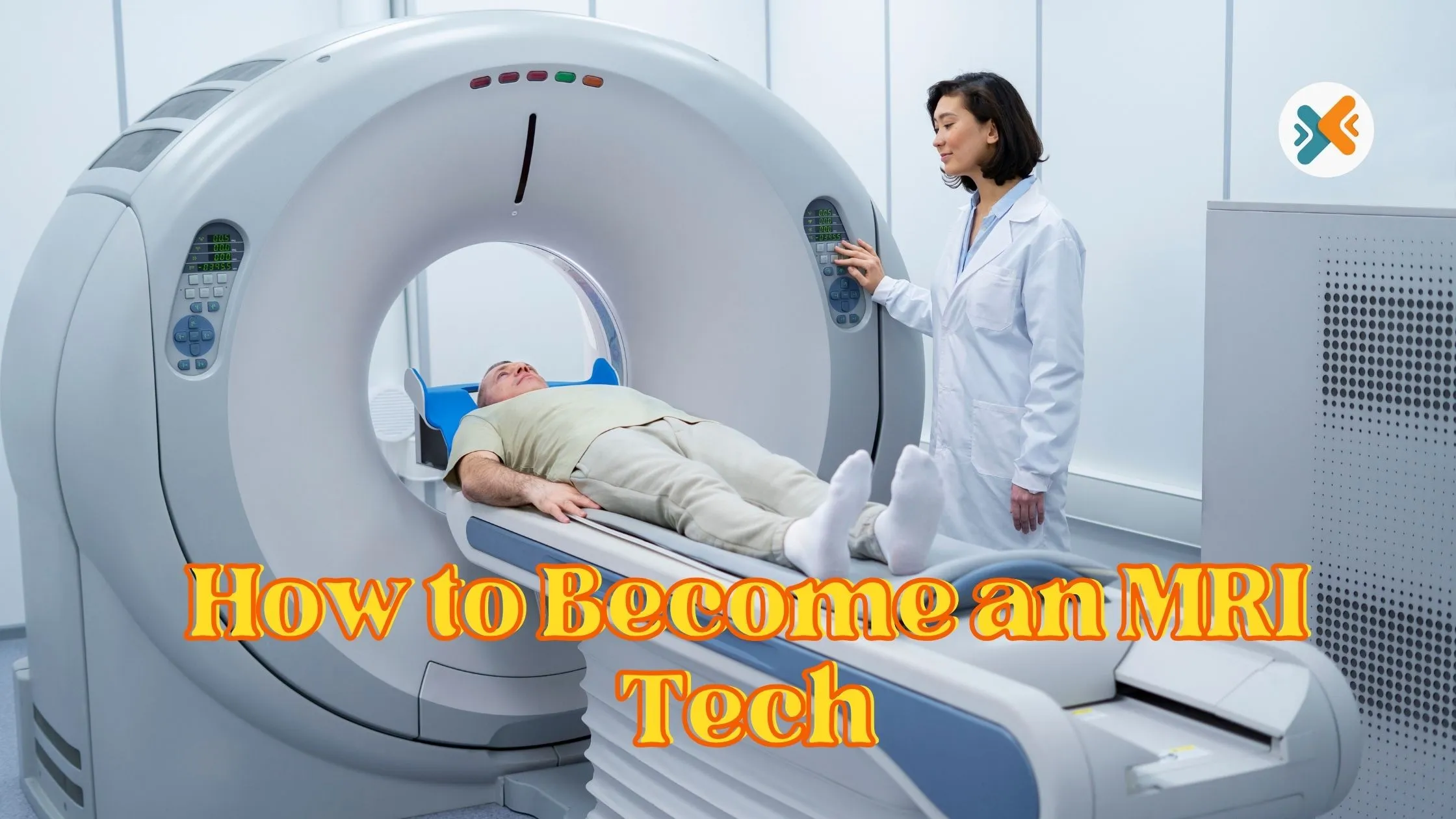Are you fascinated by the world of medical imaging and interested in helping patients while working with advanced technology? Becoming an MRI (Magnetic Resonance Imaging) tech could be the perfect career path for you. As a vital part of the healthcare industry, MRI techs play a significant role in diagnosing and treating various medical conditions. If you’re wondering how to become an MRI tech, this guide will walk you through everything you need to know, from job responsibilities to educational requirements, salary expectations, and career prospects.
Read More:
- Xiaomi 15 Ultra Review: A Flagship Phone That Packs a Punch
- Samsung Galaxy S25 Ultra Release Date & Features
- iPhone 16 Pro Drop Test Results: The Risks of Ultra-Thin Bezels
- Samsung Galaxy S25: The Future of Smartphones
What is an MRI Tech?
An MRI tech, also known as a magnetic resonance imaging technologist, is a healthcare professional who operates MRI machines to create detailed images of a patient’s internal structures, such as the brain, spine, muscles, and organs. These images help doctors diagnose conditions like tumors, joint injuries, neurological disorders, and more.
MRI techs work closely with patients, explaining the procedure and ensuring their comfort during the scan. They also work with radiologists, who interpret the MRI results and assist in making accurate diagnoses. MRI technology is non-invasive and doesn’t involve radiation, making it a safer option compared to other imaging techniques like X-rays and CT scans.
Key Responsibilities of an MRI Tech:
- Preparing and positioning patients for MRI scans.
- Explaining the MRI procedure to patients and addressing their concerns.
- Operating MRI machines and ensuring proper functionality.
- Monitoring patients during the scan to ensure safety and comfort.
- Collaborating with physicians and radiologists to ensure accurate results.
- Keeping patient records and documenting the results of the scans.
- Maintaining and troubleshooting MRI equipment.

What Does an MRI Tech Do?
MRI techs have a critical role in the diagnostic imaging process. Their primary responsibility is to operate MRI machines, but their job involves much more than just pushing buttons. Here’s a closer look at what MRI techs do:
1. Patient Interaction:
- Before the MRI scan, MRI techs discuss the procedure with patients, explaining the process and answering any questions. They also gather medical information to ensure that the scan is performed safely.
- They may also need to prepare patients by removing any metal objects (e.g., jewelry, watches) since metal can interfere with MRI results.
2. Setting Up the MRI Machine:
- MRI techs must configure the machine to meet the specific needs of each patient and type of scan. This includes selecting the appropriate settings for imaging different parts of the body (e.g., brain, spine, abdomen).
3. Positioning the Patient:
- One of the most important tasks for an MRI tech is to position the patient properly within the MRI machine to ensure high-quality images. This may involve positioning the patient’s body in specific ways based on the area being scanned.
4. Operating the MRI Machine:
- MRI techs are trained to operate sophisticated MRI machines that use strong magnetic fields and radio waves to create detailed images. They must ensure that the equipment is functioning correctly and troubleshoot any issues.
5. Monitoring the Patient:
- During the scan, MRI techs monitor patients through a window or camera to ensure their comfort and safety. Patients need to remain still for the duration of the scan to get clear images, and the MRI tech may give instructions or reassurance throughout the procedure.
6. Recording and Reporting:
- Once the scan is complete, MRI techs document the results and assist radiologists in interpreting the images. MRI results are essential for doctors to diagnose and plan treatment options for patients.
How to Become an MRI Tech
Becoming an MRI tech requires a combination of formal education, hands-on training, and certification. Here’s a step-by-step guide to becoming an MRI tech:
Step 1: Obtain a High School Diploma or Equivalent GED
To become an MRI tech, you need to start with a high school diploma or GED. Focus on courses in biology, chemistry, mathematics, and health science to give you a strong foundation for further education in the medical field.
Step 2: Complete an MRI Tech Education Program
While some MRI techs enter the field through on-the-job training, the majority of professionals complete an accredited MRI tech program. These programs are commonly available at community colleges, trade schools, and universities. An MRI tech program will typically take one to two years to complete and will lead to an associate degree or a certificate.
What to Expect in an MRI Tech Education Program:
- Coursework: You will study subjects like human anatomy, patient care, MRI physics, medical terminology, radiology, and medical ethics.
- Clinical Training: In addition to classroom learning, you will gain hands-on experience through clinical internships at hospitals or imaging centers.
- Certification Preparation: Most programs prepare students to sit for certification exams.
Step 3: Obtain Certification
Although certification is not always required, most employers prefer MRI techs to be certified. The most widely recognized certification is offered by the American Registry of Radiologic Technologists (ARRT). To earn the ARRT certification, you must:
- Complete an accredited MRI tech program.
- Pass the ARRT certification exam for MRI.
- Meet continuing education requirements to maintain your certification.
Additionally, some states may have their own licensing requirements for MRI techs. Be sure to research the specific requirements for the state where you plan to work.
Step 4: Gain Experience
After earning your certification, gaining experience is crucial to advancing your career. Entry-level MRI tech positions typically offer on-the-job training, allowing you to refine your skills and become proficient in operating MRI machines. As you gain experience, you can take on more complex imaging procedures and work with a wider range of patients.
Step 5: Consider Specializations and Advanced Certifications
Once you’ve worked in the field for a few years, you may choose to specialize in a particular area of MRI, such as musculoskeletal imaging, neuroimaging, or pediatric MRI. The ARRT offers advanced certifications in these areas, which can help you stand out in the job market and increase your earning potential.
Skills for MRI Techs
To become a successful MRI tech, you need a combination of technical, interpersonal, and physical skills. Here are the key skills you’ll need:
1. Technical Skills
- Knowledge of MRI machine operation and safety protocols.
- Ability to troubleshoot and resolve equipment issues.
- Understanding of MRI physics and anatomy to capture high-quality images.
2. Attention to Detail
- MRI techs must be meticulous in positioning patients and selecting settings to ensure accurate and clear images. Small mistakes can lead to poor-quality scans or missed diagnoses.
3. Communication Skills
- MRI techs must explain procedures to patients, calm any anxieties, and give clear instructions during scans. They also need to communicate effectively with doctors and radiologists.
4. Physical Stamina
- MRI techs often work long hours and must be able to stand for extended periods, lift patients, and position them properly within the MRI machine.
5. Problem-Solving Skills
- MRI techs need to think quickly and problem-solve when issues arise with equipment or patient positioning to ensure successful scans.
Work Environment for MRI Techs
MRI techs typically work in hospitals, imaging centers, outpatient clinics, and private medical practices. Their work environment is fast-paced, and they often collaborate with other healthcare professionals, such as radiologists, physicians, and nurses.
Work Conditions:
- Hours: MRI techs may work evenings, weekends, or on-call shifts depending on the healthcare facility’s needs.
- Safety: While MRI machines use strong magnetic fields, MRI techs are trained to handle the equipment safely. They must ensure patients remove all metallic items before the scan.
- Physical Demands: The job requires lifting patients, standing for long periods, and positioning them inside MRI machines.
Salary and Job Outlook
The demand for MRI techs is expected to grow in the coming years, thanks to the aging population and advancements in medical imaging technology. The U.S. Bureau of Labor Statistics reports that the median annual salary for MRI technologists in 2023 was around $80,000. Salaries can vary depending on factors such as location, experience, and certification.
Job Outlook:
The job outlook for MRI techs is strong, with employment projected to grow by 7% from 2021 to 2031. This growth is attributed to the increasing need for medical imaging services as the population ages and as MRI technology becomes more widely used for diagnostics.
Conclusion
Becoming an MRI tech offers a rewarding career in the healthcare field, with opportunities for job growth, a competitive salary, and the chance to make a meaningful impact on patients’ lives. By following the steps outlined in this guide, including obtaining the necessary education, gaining experience, and pursuing certification, you can start your journey toward becoming a skilled and sought-after MRI technologist.
Frequently Asked Questions (FAQs)
1. How long does it take to become an MRI tech?
- On average, it takes about 1-2 years to complete an MRI tech education program, followed by passing the certification exam. Gaining experience in the field may take additional time.
2. Do MRI techs need a college degree?
- While a college degree is not always required, most MRI techs earn an associate degree or certificate from an accredited program to gain the necessary knowledge and skills.
3. How much do MRI techs make?
- MRI techs earn a median salary of around $80,000 annually, though salaries can vary based on location, experience, and certification.
4. Is it hard to become an MRI tech?
- Becoming an MRI tech requires dedication, a strong understanding of medical imaging technology, and clinical training. However, with the right education and hands-on experience, it is an achievable career path.
5. What are the career advancement opportunities for MRI techs?
- MRI techs can pursue additional certifications in specialized imaging fields, such as pediatric MRI or musculoskeletal imaging, which can lead to higher salaries and more job opportunities.


